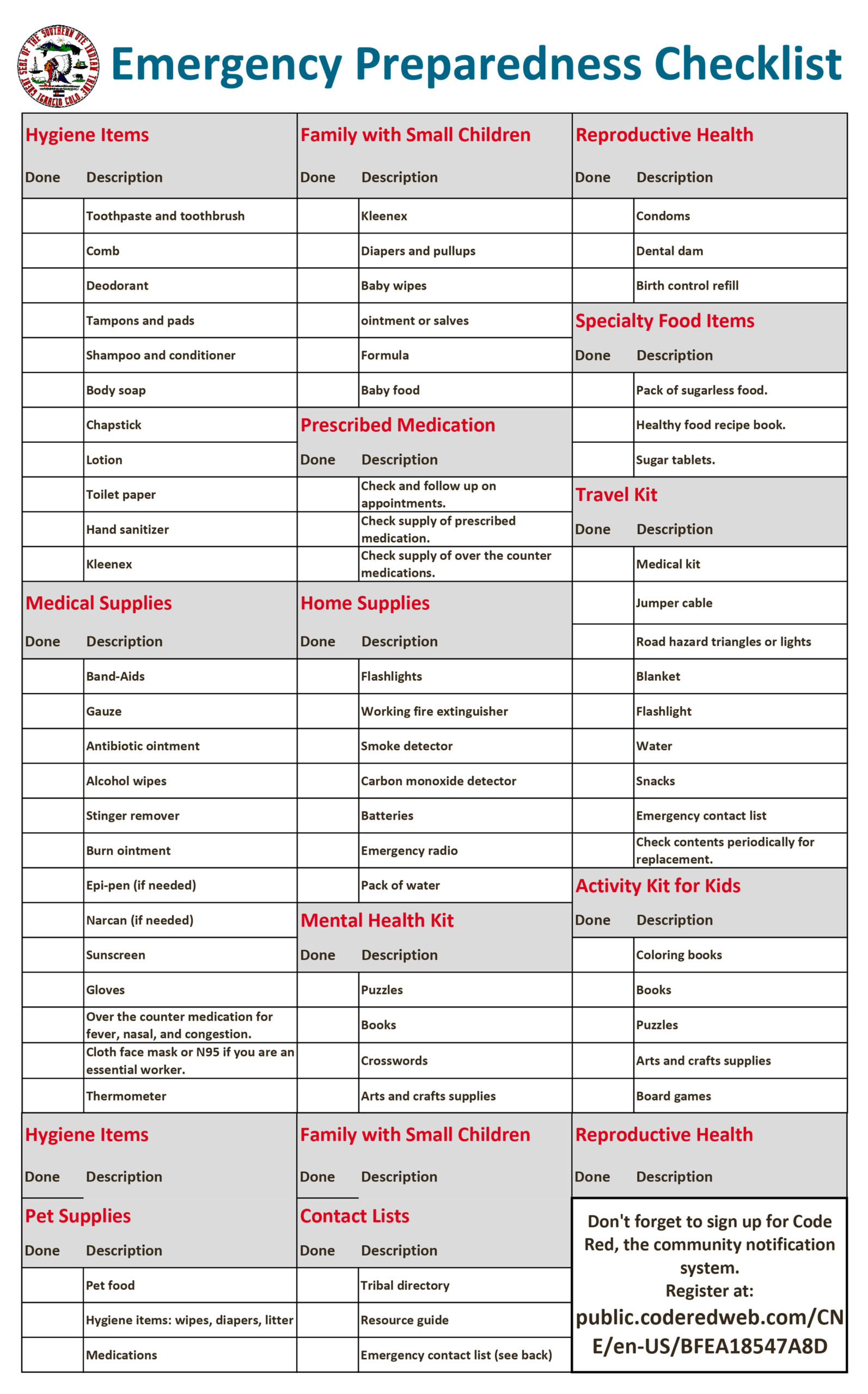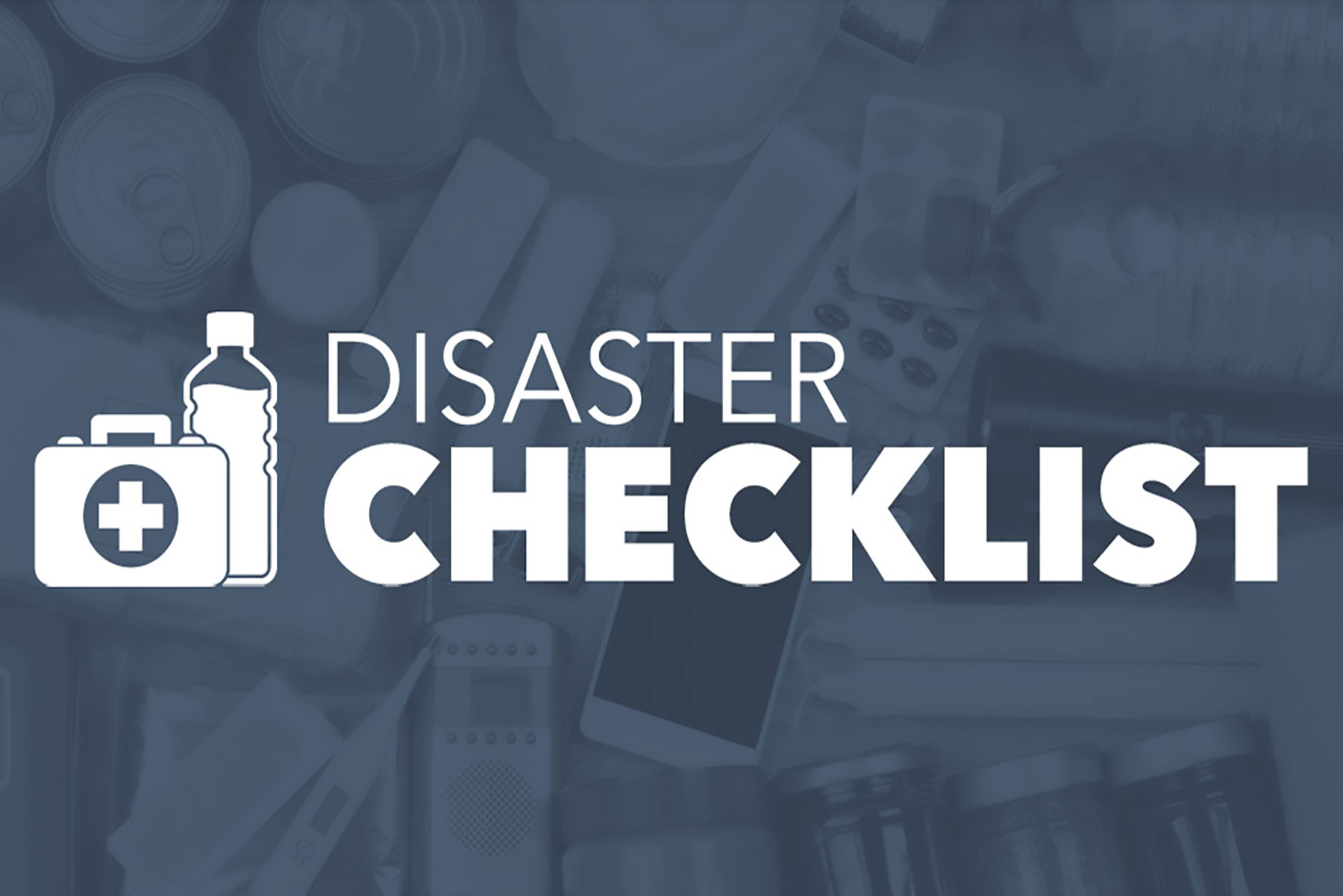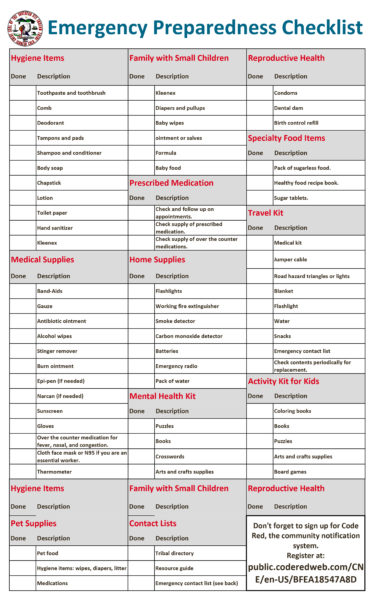Schedule a family meeting to explain potential disaster dangers and to prepare the family to respond as a team. This meeting should also include any caregivers. A disaster plan should include the following components:
- Designate an Out-of-Town Contact Person: Choose a friend or relative who lives out of town to be a contact person. Everyone should contact this person to let them know their status and location after a disaster. Make sure every family member has this person’s phone number.
- Give the contact person information such as insurance policy numbers and copies of important papers (optional).
- Choose a Meeting Location: If family members separate, they should meet at a specific location after a disaster. Ensure your children understand.
- Make a Communication Plan: Give important phone numbers to every family member so everyone can contact each other after a disaster. Teach children how to make emergency phone calls.
- Designate Escape Routes: Create several escape routes in case of fire, and make sure everyone knows them. Instruct everyone to go to the lowest level of the home and away from windows if a tornado occurs. Perform a family drill at least two times a year. Ensure your children understand.
- Make a Floor Plan: Create a floor plan of every level of a home that includes windows, doors, stairways, large furniture, disaster supplies, fire extinguishers, utility shut-off points, and collapsible ladders.
- Make an Alternative Plan for Special Needs: If family members have special needs, make a plan to ensure that these people have assistance.
- Plan for Pets: Make a plan to evacuate with pets, if necessary. If shelters don’t allow pets, animals may need to be boarded elsewhere
DISASTER PLANNING ACTIONS
Families can take care of specific issues prior to a disaster to ensure that they are ready to respond accordingly. Some actions involve the purchase of and installation of tools or detectors that will enhance safety or enable a proactive response. Some actions involve gathering information. Other actions involve gathering supplies.
- Utilities: Learn about when and how to turn off utilities such as water, electricity, and gas. If you need tools to turn off gas and water, keep these at the shut-off valves. Turn off utilities if you suspect damage.
- Fire Extinguishers: Purchase fire extinguishers for every level of a home and ensure that all family members know how to use them.
- Smoke and Carbon Monoxide Alarms: Purchase and install these detectors on every level of a home, including near bedrooms.
- Insurance Policies: Purchase policies to cover against property loss. Check coverage to ensure that it will cover all potential damage.
- First Aid and CPR: Take classes to learn first aid and CPR.
- Home Inventory: Take inventory of possessions to enable an insurance claim after a disaster. Store home inventory information in a secure location such as a safe-deposit box.
- Vital Records: Store family records such as marriage and birth certificates, passports, wills, deeds, Social Security cards, and financial records in a safe-deposit box.
- Home Hazards: Reduce common home hazards by repairing defective electrical wiring or fixing a leaky gas connection. Repair cracks in home foundations and ceilings to prevent them from further damage in the case of a disaster. Schedule professional chimney maintenance to prevent heat and smoke damage to your home. Store chemicals such as pesticides, weed killers, and flammable items away from heat sources. Install furniture straps and hooks to keep bookshelves, cabinets, and appliances in place against wall studs.
- If a disaster happens, know that disaster restoration services are available to help and can report and work directly with your insurance company while you get your day-to-day life back to normal.
CREATE A DISASTER SUPPLY KIT
Assemble a kit of supplies and items to take along if an evacuation. A supply kit eliminates the need to search for supplies in a crisis. Store the kit in a portable container near the door and review the contents regularly. Assemble the following supplies:
- Three-day supply of nonperishable food for every family member
- Three-day supply of water for every family member
- Manual can opener
- Battery-powered radio or television with extra batteries
- Flashlight and extra batteries
- First aid kit with instruction booklet
- Hygiene items: moist towelettes, toilet paper, hand sanitizer
- Waterproof matches
- Extra clothing and blankets
- Kitchen tools and utensils
- Whistle
- Photocopies of credit cards and identification
- Cash: small-denomination bills and coins
- Special needs items: glasses, contact lens solution, hearing aid batteries, medications
- Infant supplies: diapers, bottles, formula
- Tools and a map of the area
- Pet supplies
- Cold-weather gear: jackets, hats, mittens, scarves, sleeping bags, extra blankets, sturdy shoes, pants and long-sleeved shirts
- Vehicle supplies: maps, white distress flag, windshield scraper, tire repair kit, flares, jumper cables, tire pump, shovel, tire chains, sand
- Warm-weather supplies: sunscreen, shade items





